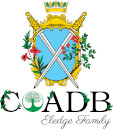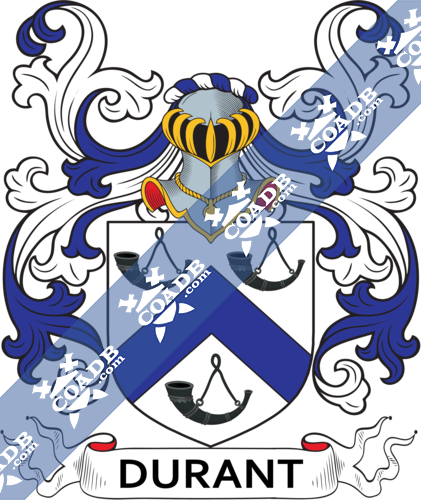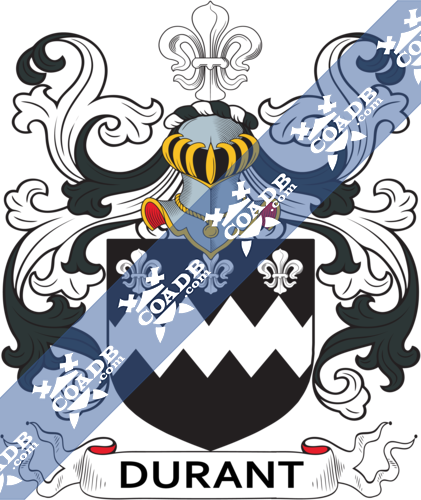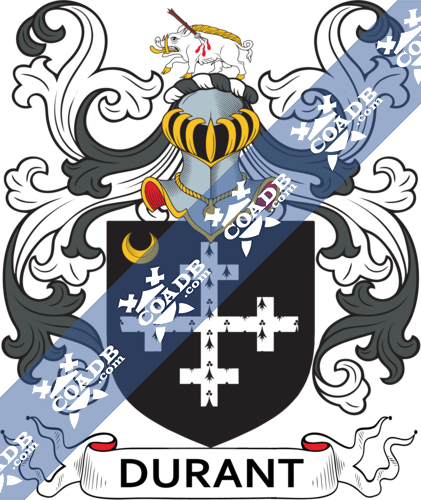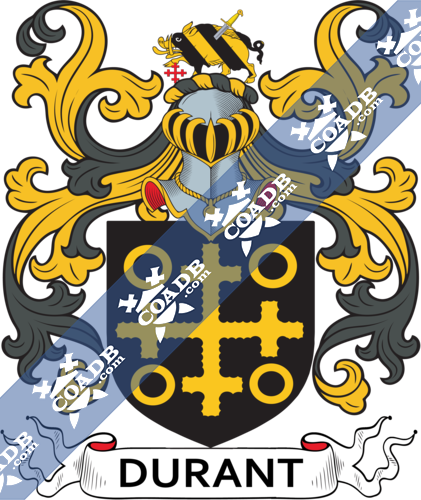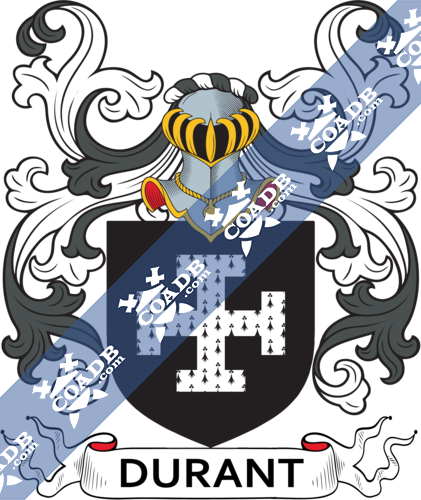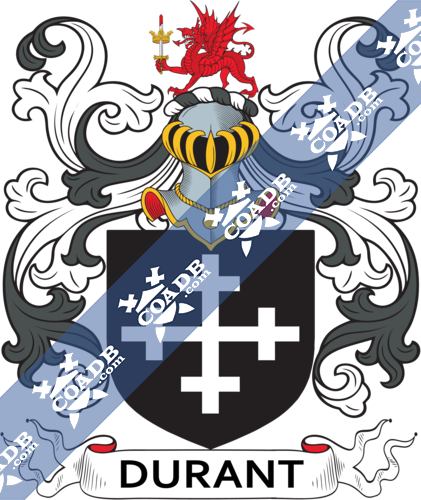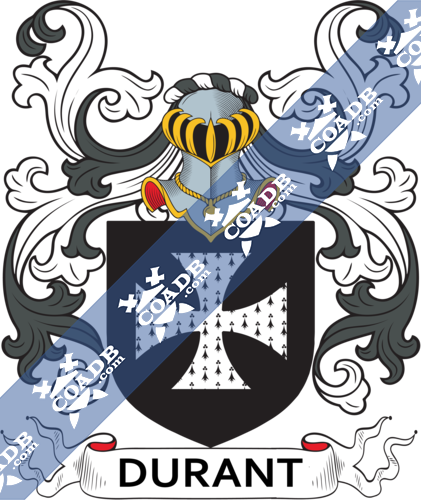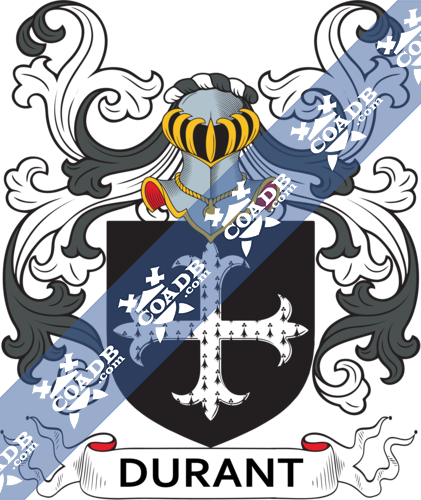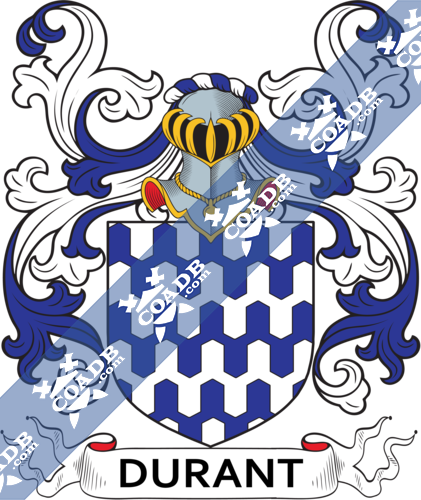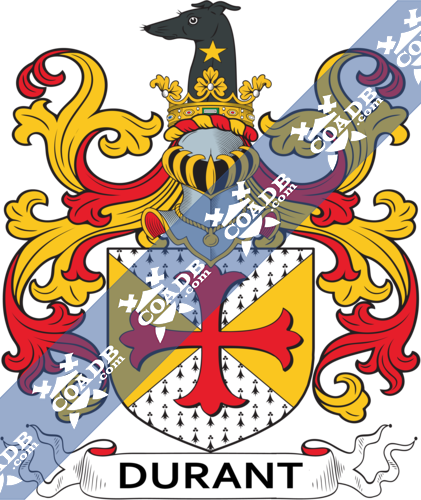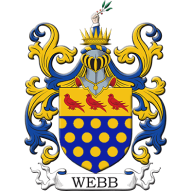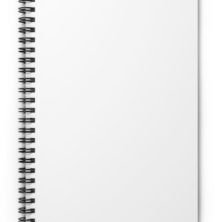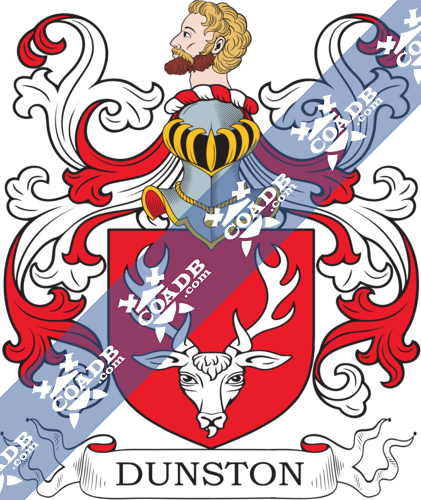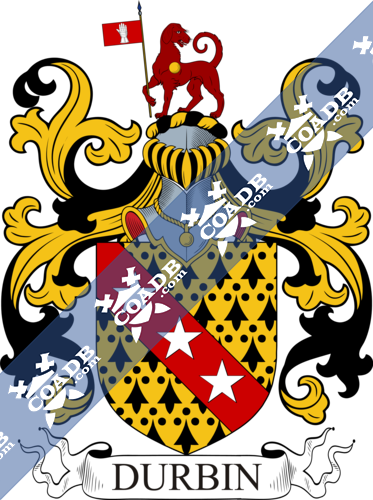Durant Family Crest, Coat of Arms and Name History
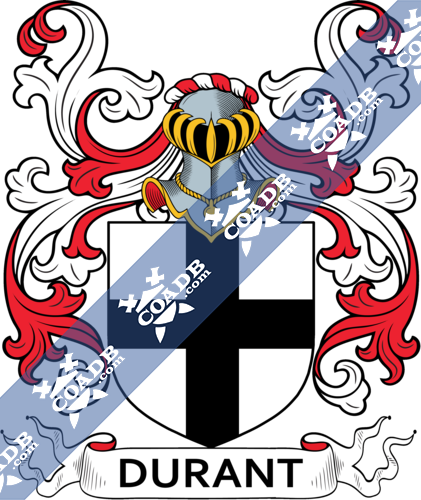
Durant Coat of Arms Gallery
Don’t know which Coat of Arms is yours?
We can do a genealogical research. Find out the exact history of your family!
Learn MoreDURANT
The English surname has its origins in the medieval French personal name “Durant” which translates to enduring, which is a derivative of the Latin “durus” which means hard or firm. As such, it would be considered patronymic. The name is thought to have migrated to the British Isles after the Norman Invasion in 1066.
The first recording of the surname appears in the Westmoreland tax records dated 1196. These rolls, were a series of census and tax records kept by the English Treasury by order of King Richard I, with the oldest dating back to the 12th century. They hold the distinction of being the oldest consecutive set of records detailing English governance in the United Kingdom. These records span a period of over 700 years
Surnames in Europe prior to the late 16th century were largely unheard of. In the small settlements and villages which existed during earlier times, residents found little need for surnames as everyone in these communities new each other and a given name would usually suffice. However, with the passage of time, population growth and expansions of communities as villages gave way to towns and cities, it became necessary to add a qualifier to a people’s names to distinguish them, one from another. Therefore one person may have been identified by their given name plus their occupation while another may have been identified by their given name and one of their parent’s names. The introduction of surnames by the aristocracy seemed to be the next logical step in this evolution. There was a endless supply from which surnames could be formed, in addition to the use of patriarchal/matriarchal names or reference to the individuals occupation, there were things such as defining physical traits, a familiar geographical location or a topographical landmark found near the individuals home or birthplace, the name of the village in which the person lived, and so much more. Soon, surnames would come not just to represent an individual but whole families.
There often exists variations in spelling of many surnames, as with many given names which date back to the early centuries. The variation in spelling of both given and surnames during this time period can be attributed to a lack of continuity regarding guidelines for spelling which was compounded by the diversity of languages in use in European countries at this time. The variations in the spelling of the surname include but not limited to; Durant; Durand; Durrand; and Durrant among others.
The use of surnames aside from making the distinction between individuals with common first names also allowed for the government to have a more accurate method of record keeping for taxes, censuses, and immigration which greatly increased with the discovery of America and the addition of countries to the British Commonwealth such as; Canada, Australia, and New Zealand.
One of the first recorded immigrants to America bearing the surname or any variation of the spelling was William Durant who arrived in 1648 and settled in Maryland and Jo Durant landed and settled in Virginia in 1650.
There were also many immigrants to the British Commonwealth countries of Canada and Australia and New Zealand bearing the surname Durant. Jean Durant landed in 1657 and settled in Nova Scotia. Susannah Durant landed in 1847 and settled in Adelaide, Australia.
Worldwide, the highest concentration of people with the surname Durant are found in Belgium, Canada, the United States, France, and Australia. By state, the largest percentile of those with the surname Durant live in New Hampshire, South Carolina, Massachusetts, Maine, and Oklahoma.
There are many persons of note who bear the surname Durant such as, American born, William C. Durant who was a pioneer in the United States automobile industry.
Durant along with Frederic L. Smith founded General Motors, he co-founded Chevrolet with Louis Chevrolet, and interdependently founded Frigidaire. Durant also created United Motors Company, a conglomerate of parts and component manufacturers which included such companies as; Dayton Engineering Laboratories (later renamed Delco Electronics), Harrison Radiator Corporation, and Perlman Rim among others. Durant went on to sell United Motor Company to General Motors which would become one of the largest auto manufactures in the world.
In 1996, Durant was entered into the Junior Achievement U.S. Business Hall of Fame. Durant Park in Lansing, Michigan and Waterford Durant High School in Waterford, Michigan are both named in his honor.
Blazons & Genealogy Notes
1) (co. Cornwall). Ar. a cross sa.
2) (co. Derby; granted June, 1606). Sa. a cross crosslet erm. a crescent or, for diff. Crest—A boar ar. bristled, armed, and unguled, or, pierced in the side with a broken spear ppr. vulned gu.
3) (Sharpham, co. Devon). Motto—Beati qui durant. Sa. a cross crosslet engr. betw. four annulets or. Crest—A boar bendy of six or and sa. pierced through the back by a sword in bend sinister ppr. and resting the dexter foot upon a cross crosslet gu.
4) (co. Oxford). Sa. a cross potent erm.
5) (co. Middlesex). Sa. a cross crosslet ar. Crest—A dragon pass. gu. holding in the dexter claw a sword erect ar. point bloody, hilt and pommel or, on the blade a ducal coronet of the last.
6) (Barndon, co. Rutland). Sa. a cross pattee erm.
7) (co. Rutland). Sa. a cross flory erm.
8) Vaire en point ar. and az.
9) Per saltire or and erm. a cross patonce gu. Crest—Out of a ducal coronet or, a greyhound’s head sa. charged on the neck with an estoile of the first.
10) Ar. a chev. az. betw. three buglehorns sa.
11) (co. Hants. Her. Visit. 1634). (Long Castle, Salop). Sa. a fesse dancettee ar. in chief three fleurs-de-lis of the last. Crest—A fleur-de-lis ar.
